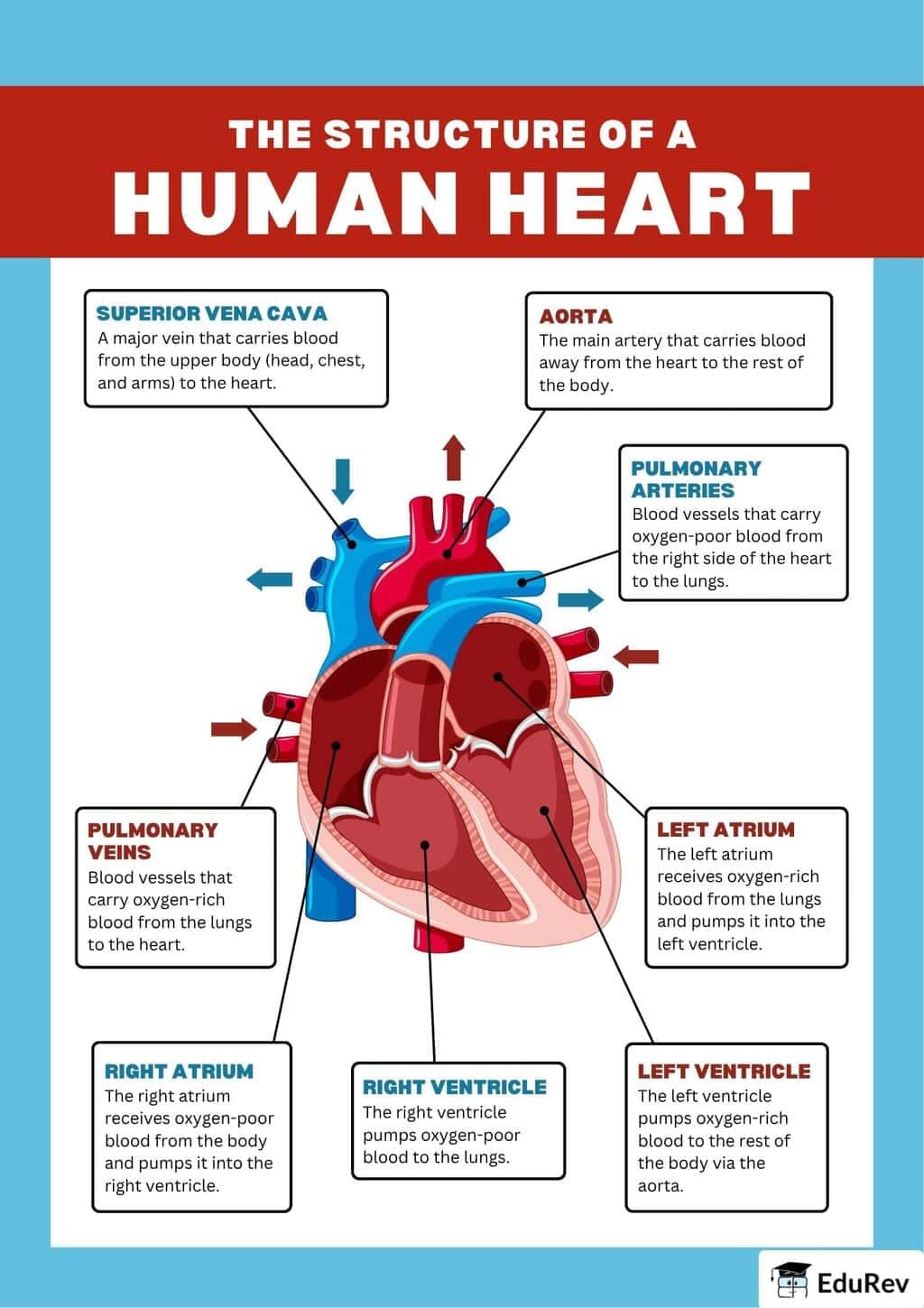NEET Exam > NEET Notes > Biology Class 11 > Poster: Structure of Human Heart
Poster: Structure of Human Heart | Biology Class 11 - NEET PDF Download

The document Poster: Structure of Human Heart | Biology Class 11 - NEET is a part of the NEET Course Biology Class 11.
All you need of NEET at this link: NEET
|
169 videos|531 docs|136 tests
|
FAQs on Poster: Structure of Human Heart - Biology Class 11 - NEET
| 1. What are the main structures of the human heart and their functions? |  |
Ans. The human heart consists of four main chambers: the right atrium, right ventricle, left atrium, and left ventricle. The right atrium receives deoxygenated blood from the body and pumps it into the right ventricle, which then sends it to the lungs for oxygenation. The left atrium receives oxygenated blood from the lungs and transfers it to the left ventricle, which pumps it out to the rest of the body. Additionally, the heart has valves (tricuspid, pulmonary, mitral, and aortic) that ensure unidirectional blood flow and prevent backflow.
| 2. How does the cardiac cycle function in the human heart? |  |
Ans. The cardiac cycle is the sequence of events that occurs during one heartbeat, encompassing two main phases: diastole and systole. During diastole, the heart muscle relaxes, allowing the chambers to fill with blood. In systole, the heart muscle contracts, pumping blood out of the chambers. This cycle is essential for maintaining blood circulation and is regulated by electrical impulses that trigger contractions in a coordinated manner.
| 3. What is the significance of the coronary arteries in heart function? |  |
Ans. The coronary arteries supply blood to the heart muscle itself, providing it with the necessary oxygen and nutrients to function effectively. There are two main coronary arteries: the left and right coronary arteries. Blockages or narrowing of these arteries can lead to conditions such as angina or myocardial infarction (heart attack), highlighting their critical role in heart health.
| 4. How does the structure of the heart relate to its function? |  |
Ans. The structure of the heart is intricately designed to support its function as a pump. The muscular walls of the ventricles are thicker than those of the atria, allowing them to generate the high pressure needed to pump blood throughout the body. The presence of valves ensures that blood flows in one direction, while the septum separates the right and left sides of the heart, preventing mixing of oxygenated and deoxygenated blood. This structural arrangement is essential for efficient circulation.
| 5. What is the role of the heart's electrical conduction system? |  |
Ans. The heart's electrical conduction system controls the heartbeat by generating and transmitting electrical impulses. The main components include the sinoatrial (SA) node, atrioventricular (AV) node, bundle of His, and Purkinje fibers. The SA node acts as the natural pacemaker, initiating the heartbeat and stimulating the atria to contract. The AV node then transmits the impulse to the ventricles, ensuring coordinated contractions. This system is crucial for maintaining a regular heartbeat and effective blood circulation.
Related Searches
















